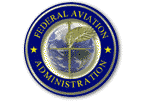Crossing the majestic Sierras on one of my rare weekend pleasure flights, thoughts of work started to creep in. Though all was serene in this perfect sky, I couldn’t help, but wonder how many of my fellow aviators would experience a less than an enjoyable ending to their weekend sojourn.
On Monday morning at work, the computer spit out the answer with clinical detachment. The FAA Office of Accident Investigation reported 36 accidents over the 2-day weekend, which included 6 fatal crashes. Not at all an unusual figure, perhaps even low for a summer weekend. Also, these were just the reported accidents. It is likely that there were several more accidents that never made it to the official records since not all accidents are, or have to be, reported.
So what went wrong? Just the usual, that occurs over and over again ever since Wilbur and Orville broke the surly bonds. Here are a few random excerpts in brief from the report:
AIRCRAFT LANDED GEAR UP ON RUNWAY 13R, BROWNSVILLE, TX
WHILE TAXIING OFF THE RUNWAY, WAS STRUCK BY ANOTHER ACFT
ACFT IMPACTED POWERLINE WHICH WRAPPED AROUND THE LANDING GEAR AND PROPELLER FORCING ACFT TO THE GROUND, MITCHELL, SD
ACFT ATTEMPTED TO LAND AND HIT TREELINE AND CRASHED 200-500 YARDS SW OF GALION AIRPORT, FOUR PERSONS ON BOARD, TWO WERE FATALLY INJURED, TWO SUSTAINED SERIOUS INJURIES,
AIRCRAFT HIT TREES WHILE LANDING AT A PRIVATE STRIP, ONE PERSON ON BOARD WAS FATALLY INJURED
ACFT STALLED ON TAKEOFF AND CRASHED JUST OFF THE AIRPORT, OTHER CIRCUMSTANCES ARE UNKNOWN, OSHKOSH, WI
WHILE EN ROUTE, THE ENGINE LOST POWER. PILOT MADE AN EMERGENCY LANDING ON A DIRT ROAD IN THE DESERT, 42 NW OF ALPINE, TX
It would be wrong to draw any conclusions just from these brief excerpts, but they are a newsflash reminder that not all of us are having a good flying day. As a pilot, the single most important way you can avoid becoming an accident statistic is to take heed of the accidents of others. For example, you may have noticed that two of the above serious accidents involved planes hitting trees during the approach. Perhaps if either pilot had recently read about someone having a similar accident, it might have altered their course of action and we wouldn’t be reading about them now.
Aside from being a dedicated chicken, 25 years of investigating aircraft accidents have made it impossible for me not to fly without the “Ghosts of Accidents Past” riding along. This is a good thing. If am tempted to scud-run through a mountain pass or play tag with Mr. Ice, the “Ghosts” are there to remind me of the penalties for not succeeding. It suddenly becomes very easy to make the right decision. Even if your job doesn’t involve investigating aircraft accidents for a living, you can still develop your own helpful ghosts by learning from the mistakes of others to avoid similar misfortune.
You might want to start on-line with http://www.ntsb.gov/ or http://www.faa.gov/ for a review of current and past accident investigations. The Air Safety Foundation section of the AOPA web site, http://www.aopa.org/, is also an excellent resource. In particular I would suggest checking out the Nall Report. This provides a comprehensive review and statistical analysis of general aviation accident trends on a yearly basis. It is an eye-opening read for any pilot. One of the best monthly subscription periodicals, in my opinion, is Aviation Safety. This is an easy to read and highly informative magazine profiling interesting accidents and safety of flight issues.
 NTSB |
 FAA |
 AOPA |
When studying an accident put yourself in the pilot’s place and identify what went wrong and what you would have done to change the outcome. The more you do this, the more you will elevate your own decision making and judgment skills and become a safer pilot in the process. Drawing upon the hard-earned lessons of others and not wanting to travel that same road just may keep you out of the headlines. Simple as that.
Editor’s Note: This article was written by Ken Steiner prior to his retirement from the United States Aircraft Insurance Group as a Vice-President and Claims Manager. During his career, Ken investigated thousands of aircraft accidents involving small planes, crop dusters, helicopters, corporate aircraft, and airliners. He has been on-site at over 100 fatal aircraft accident investigations. He is currently an Aviation Investigative Consultant and is also a Pilot and Tactical Flight Officer for the San Mateo County Sheriff’s Air Support Unit. He owns a Cessna 182 based at San Carlos and holds ATP and CFI certificates with over 5000 flying hours.


